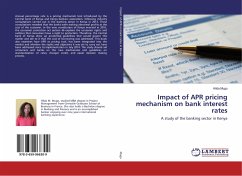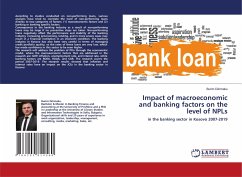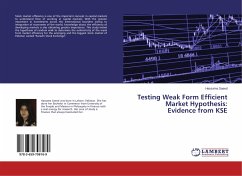
Determinants of bank credit to the private sector-evidence from CESEE
Versandkostenfrei!
Versandfertig in 6-10 Tagen
30,99 €
inkl. MwSt.

PAYBACK Punkte
15 °P sammeln!
This paper aims to study the factors of bank credit, using a wide panel of factors, including 15 countries in the region of South East Europe and Central East Europe, for a period from 1994 to 2014. The importance of this study stems from the fact that the transition period in CESEE began the new formation of the banking sector based on foreign capital. Economic growth before 2009 was also due to credit growth, which recorded a credit boom of 25-30% over the years. The financial crisis period and after lowered credit rates at depressive levels. The complexity of these events in the banking mar...
This paper aims to study the factors of bank credit, using a wide panel of factors, including 15 countries in the region of South East Europe and Central East Europe, for a period from 1994 to 2014. The importance of this study stems from the fact that the transition period in CESEE began the new formation of the banking sector based on foreign capital. Economic growth before 2009 was also due to credit growth, which recorded a credit boom of 25-30% over the years. The financial crisis period and after lowered credit rates at depressive levels. The complexity of these events in the banking market and broader tend to be studied by extensively studying bank credit factors to the private sector, a very important indicator of banking performance. Macroeconomic factors and bank-specific factors appear to have a significant impact on bank credit. The results show that bank-specific factors explain more the behavior of bank credit, while not neglecting the impact of macroeconomic factors












